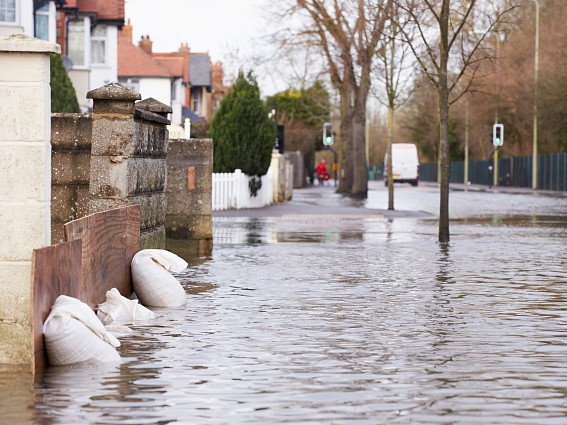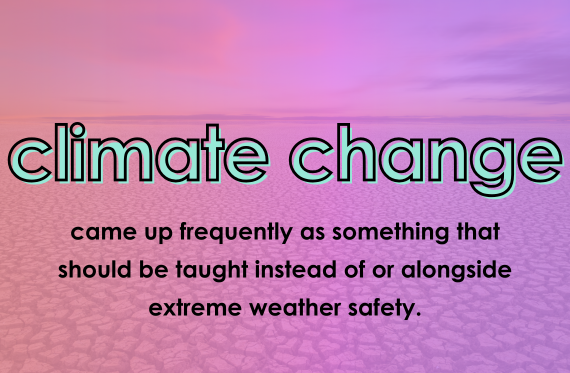Looking for something specific? Use these links to jump to a section:
WHAT IS CLIMATE ANXIETY?
WHY IT SHOWS UP IN SCHOOLS
WHY THE USUAL APPROACH ISN'T WORKING
WHAT SCHOOLS ARE DOING (AND WHAT WORKS)
WHAT COULD HELP GOING FORWARD
A WARNING FOR THE FUTURE
Climate Anxiety in the Classroom: What (Exactly) Are We Meant to Do?
If you work in education, you’ve likely noticed it: pupils expressing worry, frustration, or even hopelessness about the future of the planet.
Welcome to the growing world of climate anxiety, something more and more young people are living with, and something that adults are still working out how to respond to.
But how are teachers supposed to address it? Especially when they’re dealing with their own climate worries, let alone tight timetables and budget cuts?
Here’s what we know, and what might help.
What is climate anxiety?
Climate anxiety is a sense of fear, worry, or helplessness about the future of the planet. It’s not a mental illness, but it is a very real emotional response to the climate crisis, and it’s becoming more common.
In a landmark global study including UK respondents, 59% of 16–25 year olds said they were “very or extremely worried” about climate change, and more than half reported feelings of sadness, anger, and powerlessness.
Closer to home, a Greenpeace-commissioned poll found that 78% of children under 12 in the UK worry about climate change. The same survey revealed a worrying gap in support: 70% of teachers said they don’t have the time or training to help students cope.

Why it shows up in schools
School is where young people process the world. So it makes sense that climate anxiety shows up here - whether it’s through class discussions, lunchtime chats, or a VoteTopic on the environment.
At VotesforSchools, we’ve seen this firsthand. Over the years, our voters have debated questions like:
- Is apathy the biggest threat to the environment?
- Does positive news inspire you to take action to help the environment?
- Should we learn more about coping with extreme weather?
And time and again, their comments show us just how deeply they feel about it all. Some are hopeful. Others? Not so much.

Why the usual approach isn't working
Most climate education is designed to raise awareness, with plenty of stats, videos, and shocking facts. That’s important - but when we focus on the problem and forget about students' emotional reactions, we leave them hanging.
Many describe feeling anxious and helpless. And when young people feel like no one’s listening, not even politicians, the emotional toll ramps up. Imperial College London research links these feelings to guilt, grief, and even a reluctance to plan for the future, including questions around whether to have children.
What some schools are already doing (and what works)
Talking about it - openly and often
Ignoring climate anxiety won’t make it go away. But giving space for honest conversations can help students feel less alone and more in control.
Linking it to mental health and wellbeing
When VotesforSchools resources tackle environmental topics, we also focus on agency, empathy, and resilience. It’s not about scaring students into action - it’s about helping them feel heard and capable.
Focusing on action, not perfection
No one student can “solve” climate change, and they shouldn't be expected to. But small, meaningful actions, like joining an eco club, writing to an MP, or learning how climate policy works, can ease anxiety by giving students something to do.
Making climate education more relevant
Young people are asking for more than facts. A survey from the British Science Association in 2023 found that students want climate education that’s practical, personal, and prepares them for real-life decisions.
What could help going forward
Better curriculum support
The current climate curriculum is patchy and often outdated. The DfE’s 2022 strategy included plans for a model science curriculum and a Climate Leaders Award, but there’s still a long way to go. Teachers need resources that reflect both urgency and emotional impact.
Listening, properly, to young people
Not just in surveys, but in classrooms, school councils, and assemblies. Let them vote. Let them question. Let them lead the conversation.
Supporting teachers too
No one can guide students through climate anxiety if they feel overwhelmed themselves. Teachers need time, training, and permission to talk about feelings as well as facts.
And a warning for the future
If we don’t start taking climate anxiety seriously, the impacts go far beyond wellbeing. A 2025 study warns that without adaptation, UK schools could see eight days of lost learning per year due to heatwaves, flooding, and other climate disruptions.
The bottom line?
Climate anxiety isn’t a passing phase. But neither is the compassion, honesty, and creativity of teachers.
By giving young people a voice, and genuinely listening, we can help make the climate crisis feel a little less like the end of the world and a little more like something we can face together.
Ready to have these conversations in your classroom?
- Explore our VoteTopics on climate change
- Start your free 14-day trial — no payment details, no pressure.


